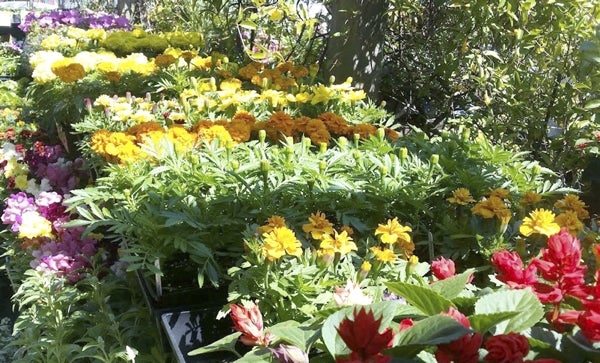Darrell Blackwelder: Bedding plants add fresh color
Published 12:00 am Friday, April 14, 2017

- Darrell Blackwelder/For the Salisbury Post Annuals and perrenials can add a bright spot to any garden. Be sure to prepare your soil first.
Cooler weather last week halted many garden activities for fear of late a frost. April 15th is typically the last frost free date in Rowan County.
But experienced gardeners know to take the date with a grain of salt and keep an eye on the extended weather forecasts. Be careful when planting tender annuals as unseasonable frosts often nips tender plants.
Those with the impulse to add a splash of color and texture to their landscapes with annuals and perennials should prepare planting beds before buying plants. Existing beds with pansies and other cool season annuals should come out soon. It seems like a waste to remove perfectly blooming plants, but the best quality and hard-to-find summer annuals and perennials often sell out early at local retail outlets.
Preparing the soil is very important, especially for those who have clay soils. Tight clay soils can be a challenge, but with proper modification these soils can easily produce beautiful flowers throughout the summer.
These soils should be amended to improve drainage and increase oxygen necessary for root expansion. The best amendments for clay soils are ground pine bark (often called soil enhancers), less than a half-inch in diameter, composted leaf mold, and PermaTill.
PermaTill is a manufactured natural amendment made from slate rock, heated to expand and provide pore space for tight clay soils. Using a combination of these amendments can greatly improve bedding plant growth and development.
Make sure that leaf mold or compost is fully composted and not merely aged before adding the soil. Organic materials that are not fully decomposed will compete with transplants for nutrients, especially nitrogen and sulfur, resulting in nutrient deficiencies and poor plant growth.
Peat moss, sand, hardwood bark, sawdust, fresh wood chips and pine straw are not recommended as an amendment for clay soils. Addition of these materials does not adequately improve the physical properties of a clay soil. In fact, sand added to clay makes the soil more like a brick.
Most annuals and perennials grow best with a soil pH around 6.5 to 7.0. Soil testing is important to determine fertility rates in acid soils.
Blend the soil amendments into the soil with a tiller or use a shovel to combine soil amendments into the planting area. The planting medium should be friable and easy to work. Transplants should be placed in hole twice the size of the rootball.
Plant the transplants at the same level as they were growing in the cell pack. Gently press the soil around the rootball and water thoroughly. Mulch with two to three inches of pine bark or other fine mulch materials. Pine needles work well around shrubs and other woody plant materials, but it’s a nightmare to use pine needles as mulch for annual bedding plants.
Other important tips:
- Choose bedding plants that adapt to the location. For example, bedding plants that must have full sun do poorly in shady locations.
- Irrigate on a regular basis early in the morning if possible. Keep the foliage as dry as possible to reduce disease pressure. Most bedding plants may require about an inch or more a week during the heat of the summer.
- Fertilize the bedding plants at least twice a month with high phosphate liquid fertilizer to promote blooms. Osmocote or other slow-release fertilizers can also be implemented for full season fertilization.
- Dead head spent blooms if possible to encourage constant and prolific blooming.
- Weed often to keep the plants looking good and reduce competition for light and nutrients.
- Keep a diary of your planting. It will come in handy next season.


